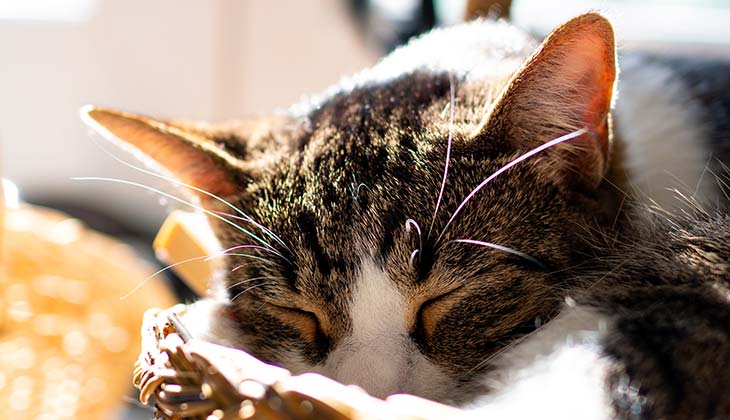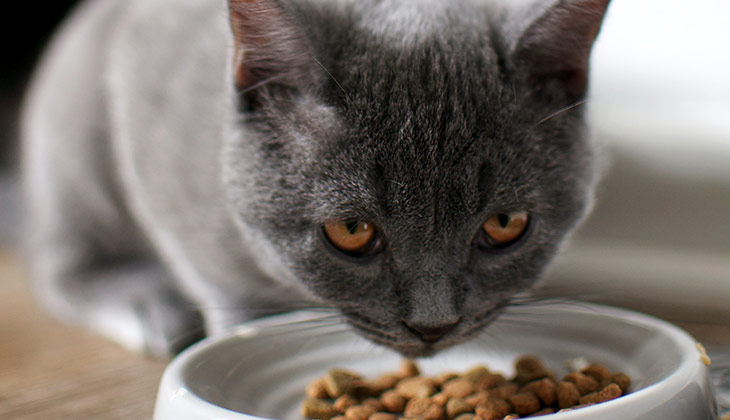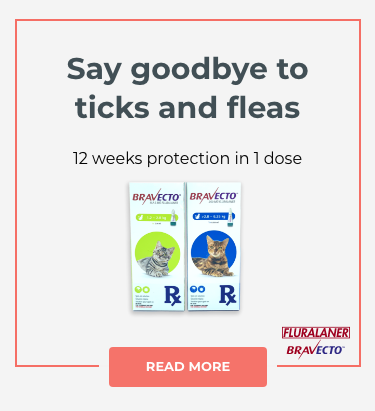Management And Maintenance Of Diabetes In Dogs and Cats
HEALTH & PROTECTION
9 Nov, 2021
5 minutes

It is only natural for a pet parent to feel overwhelmed and afraid when their furry friend is first diagnosed with diabetes. Part of this overwhelmed feeling is rooted in uncertainty, while another part is rooted in the daily treatment regime required to care for their dog or cat properly. The good news is that it’s not difficult to manage and monitor a diabetic dog or cat. Like all things in life, it requires commitment and patience.
Diabetes mellitus is a common endocrine disease of dogs and cats. Diabetic dogs and cats are unable to produce the insulin necessary to convert glucose into energy. This means that every time a diabetic dog or cat consumes food, their body is unable to absorb the glucose that is produced, and, as a result, their cells are forced to seek a different source of energy. In the meantime, glucose accumulates in the bloodstream and overflows into the kidneys, creating a cycle of nutrient loss and dehydration that affects all organs and bodily functions.

As a result of this condition, proper management and maintenance depend upon establishing a daily routine that is designed to build a steady and dependable balance of energy within the body. Veterinarians play a crucial role in developing a treatment plan that will help a diabetic dog or cat stay healthy while pet parents play a crucial role in carrying out this plan. When it comes to helping a diabetic dog or cat continues to live a long and healthy life, teamwork is paramount.
Every daily routine consists of four simple tasks.
1. INSULIN INJECTIONS
Diabetic dogs and cats need to receive an insulin replacement. Insulin is given by injection under the skin.
2. AN APPROPRIATE DIET AND REGULAR MEAL TIMES
Veterinarians prescribe diets that are suitable to meet the needs of diabetic dogs and cats. Dogs typically require a diet high in fiber, while cats require a diet low in carbohydrates. If a dog or cat needs to lose weight, a special diet geared to weight-loss is prescribed. As much as every pet parent likes to spoil their fur friend with treats and the occasional table scraps, it’s incredibly important to make sure that treats are under the advisement of a veterinarian and table scraps are, well, scrapped for good. All meals, feeding times, and snacks need to remain the same to avoid fluctuations in insulin requirements.

3. EXERCISE
This is the bright spot on the daily list of to-dos: exercise and play! Dogs and cats need to stay active every day so playtime and walks are mandatory (the same is true for all dogs and cats, not just those with diabetes). Engagement helps dogs and cats burn excess energy and stay healthy and alert. Coincidently, it tends to do the same for pet parents! Win-win.
4. HOME MONITORING
It’s essential to track and monitor the entire daily routine; this includes insulin injections, water, and food consumption, exercise, blood glucose, urine glucose, and ketones.

LIFELONG MANAGEMENT
Diabetes is a lifelong condition. This is just one of the reasons why establishing a daily routine is so vital for the pet parent and, especially, the diabetic dog and cat. Most diabetic pets respond rapidly to insulin, but it can take weeks to resolve all of the clinical signs. Successful plans take a little bit of time and effort to fall into place, and patience is the key to giving a dog or cat the time to regain balance after the initial diagnosis.
Diabetic dogs and cats can lead long, healthy lives with the proper care and attention of their condition. Visiting the vet regularly provides a solid foundation where progress and changes in health can be noted and dealt with swiftly.
As you can imagine, certain complications can arise with a dog or cat who has diabetes. The most common complication is low blood sugar or hypoglycemia. Often, this is the direct result of not following a daily routine. If a diabetic dog or cat receives too much insulin, misses a meal, or eats at different times, has a change of diet or exercise, hypoglycemia can result. It can also occur if the dog or cat suddenly becomes ill or develops another chronic condition. A closely monitored dog or cat can receive prompt and necessary care to overcome the hurdles that life will inevitably throw their way.

If you think that your dog or cat might be showing signs of diabetes, schedule a visit with your vet immediately. If you are currently managing your dog’s or cat’s diabetes and you have questions or think that there might be subtle changes taking place in their health, don’t second guess yourself, schedule an appointment with your vet to discuss your observations. No one is closer to your dog or cat than you! Just as you would be able to notice a change in any family member, the same is true for your dog or cat. Your little furry friend depends on you to make sure that their condition is managed correctly, so trust your gut at all times!
RECOMMENDED
POPULAR PAGES
RELATED POSTS
-

Finding out your dog or cat has diabetes can be a lot to digest, learn all the terms so you can ask the right questions and stay on top of your pet’s needs.
-

Pets do not understand the holidays period which change their routines. Here are 6 tips to create a pet friendly home during Chrismas!
-

It is important to know about rabies and how to protect our families. Protect your pet from rabies with an up-to-date vaccination from your veterinarian.
-

Your beloved cats can also suffer from cold and flu. In this article learn how to protect your cat during cold periods.






